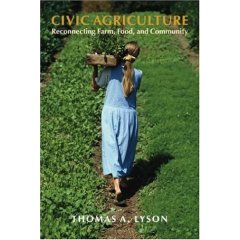"It's Not Just White Men Driving Tractors"*
 skyrocketed in the past decade. In Minnesota, and elsewhere throughout the country, Hmong farmers are increasingly familiar faces at such markets. This expansion, apparently, has not been without growing pains. Case in point, Minneapolis Star Tribune reporter Curt Brown highlighted recent tension between Hmong farmers and a St. Paul (Minnesota) farmers market in this article, Fruits, Vegetables, and Growing Discord.
skyrocketed in the past decade. In Minnesota, and elsewhere throughout the country, Hmong farmers are increasingly familiar faces at such markets. This expansion, apparently, has not been without growing pains. Case in point, Minneapolis Star Tribune reporter Curt Brown highlighted recent tension between Hmong farmers and a St. Paul (Minnesota) farmers market in this article, Fruits, Vegetables, and Growing Discord.Brown reports that some Hmong members have complained of poor treatment by the market's manager. The manager, Jack Gerten, insists that he makes all members play by the rules, which are strictly enforced. Gerten points to some problems communicating, though he holds a special meeting for Hmong members at least once a year.
The bad feelings are unfortunate. One hopes that the St. Paul market management and its members find ways to work together to preserve this option for all farmers who want to participate.
*I'm borrowing this title phrase from Stephen Carpenter of the Farmers Legal Action Group. While I'm at it, I should also note that Hmong farmers in Minnesota more frequently use rototillers than tractors.
The University of Minnesota works with recent immigrants to improve agricultural health and safety practices such as handling pesticides, and avoiding equipment injuries. U of M research fellow Michele Schermann turned her work with Hmong farmers into a book that employs traditional Hmong storytelling to illustrate the farming hazards that Hmong farm children face. For the skinny on Schermann's work, click here. A Web Sampler of the book is also available.
The University of Wisconsin's Cooperative Extension also works with Hmong farmers, offering, among other assistance, voice narrated slide shows (in Hmong and English) walking farmers through the process of selling at a farmers market.




 Monday, this blog posed the question,
Monday, this blog posed the question, 






 Over at
Over at 

 The
The 






